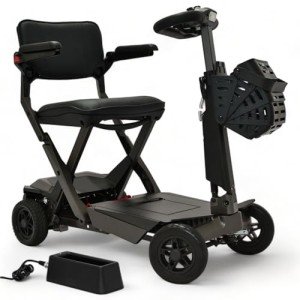Mobility Scooters: A Comprehensive Guide
Mobility scooters have ended up being a necessary mode of transportation for many individuals facing mobility difficulties. This short article checks out the numerous facets of mobility scooters, including their types, advantages, features, and a guide for potential buyers.
Understanding Mobility Scooters
Mobility scooters are electrically powered gadgets developed for people with restricted mobility. They offer a way of transport for people who may have trouble walking but still wish to retain their independence. They come in various designs and functions to cater to a large range of requirements.
Kinds Of Mobility Scooters
Mobility scooters can normally be categorized into three primary types:
| Type | Description | Best For |
|---|---|---|
| Compact Scooters | These are small and lightweight, ideal for indoors and short trips. | Users with restricted storage area or those who travel often. |
| Mid-size Scooters | A balance in between mobility and stability, suitable for both indoor and outside use. | Those who need to cover a range of terrains. |
| Heavy-duty Scooters | Big and robust, developed for rugged outdoor usage and heavier people. | Users needing additional weight capability or going off-road. |
Secret Features of Mobility Scooters
The option of mobility scooter often depends on the features that line up with individual requirements. Here are some of the essential features to think about:
- Weight Capacity: Mobility scooters feature various weight limitations. It is crucial to choose a scooter that can adequately support the user's weight.
- Variety: The range a scooter can travel on a single charge differs. Depending on user needs, one may choose scooters with a variety of approximately 40 miles.
- Speed: Most mobility scooters can reach speeds in between 4 to 8 miles per hour. Consider what mobility electric scooter is comfortable and safe for the intended environment.
- Turning Radius: A compact turning radius is important for indoor usage, allowing for easier navigation in tight areas.
- Battery Type: The type of batteries used can impact the scooter's performance. Lead-acid and lithium-ion batteries are the most typical.
Benefits of Using Mobility Scooters
The advantages of mobility scooters extend beyond simply transport. Some crucial advantages include:
- Independence: Users can browse their environment without relying on caregivers, promoting self-reliance and self-confidence.
- Health Benefits: Using a scooter can encourage outdoor activity, resulting in physical and psychological health improvements by decreasing sensations of isolation.
- Convenience: Scooters can quickly be operated in numerous environments, whether inside, in shopping malls, or outdoors.
Crucial Considerations When Buying a Mobility Scooter
When acquiring a mobility scooter, a number of factors to consider can assist make sure that you select the best model:
Assess Individual Needs:
- Mobility level: Consider just how much assistance the person will need.
- Variety of usage: Determine where the scooter will mainly be utilized (inside, outdoors, on rough surfaces, etc).
Test Drive:
- Always test drive numerous models to find a suitable fit. Take note of comfort, ease of steering, and the scooter's responsiveness.
Evaluation Safety Features:
- Look for scooters with sufficient security functions like lights, signs, and anti-tip designs.
Check Warranty and Service Options:
- A trusted service warranty and available service options are essential for long-term use.
FAQs about Mobility Scooters
1. How quick do mobility scooters go?Mobility scooters usually have speeds varying from 4 to 8 mph, with most developed for safety instead of high-speed travel. 2. Are there weight constraints on mobility scooters?Yes, mobility
scooters feature specific weight limits, often ranging from
250 lbs to over 500 pounds, depending on the design. 3. Can mobility scooters be utilized indoors?Certain designs, particularly compact scooters, are specifically developed for
indoor usage and are easier to steer in tight spaces. 4. How often do the batteries need to be replaced?Battery life can vary based upon usage, however normally, with appropriate care, batteries might last between 1 to 3 years before needing replacement
. 5. Are mobility scooters covered by insurance?Coverage can vary, but some insurance coverage plans, consisting of Medicare and Medicaid, may cover part of the expense. It's advised to consult private insurance suppliers. Mobility scooters act as a
important tool for many people, enabling them to preserve
their flexibility and self-reliance. By understanding the different types and features of mobility scooters, people can make informed decisions customized to their specific requirements.
Whether used for errands, interacting socially, or leisurely activities, mobility scooters can boost the quality of life for those with mobility limitations. Purchasing a mobility scooter is a decision that can considerably affect an individual's everyday life. Therefore, individuals need to carefully assess their choices and pick a design that best lines up with their lifestyle and mobility requirements
.

